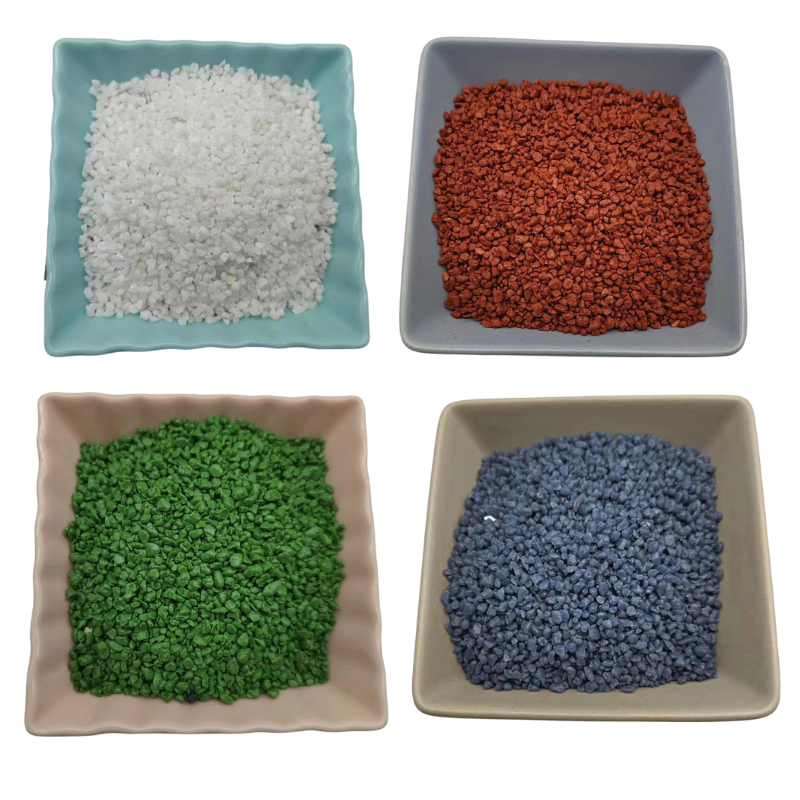
common volcanic rock
Common Volcanic Rocks An Overview
Volcanic rocks, formed from the rapid cooling and solidification of lava, are among the most fascinating materials on Earth. They provide insight into the processes that shape our planet, revealing information about past eruptions and the conditions under which they formed. The most common volcanic rocks include basalt, pumice, and rhyolite, each offering unique characteristics and uses.
Basalt
Basalt is by far the most abundant volcanic rock on Earth, making up nearly 70% of the Earth's crust, particularly in oceanic environments. It is a fine-grained igneous rock that forms from the rapid cooling of lava that is low in silica. This composition gives basalt its dark color and high density, making it a fundamental component of the oceanic crust.
Basalt is known for its durability and strength, which has led to its extensive use in construction. From roads and buildings to decorative stones, basalt’s various forms serve multiple purposes. In addition to its practical applications, basalt has significant geological importance. It often forms columnar joint patterns, which can create striking landscapes, such as those seen in the Giant's Causeway in Northern Ireland.
Pumice
Pumice is another common volcanic rock, notable for its light weight and porous texture. Formed when lava cools rapidly and traps gas bubbles, pumice is typically light-colored and can float on water due to its low density. The unique properties of pumice make it useful in various industries, particularly in construction and personal care.
common volcanic rock

In construction, pumice is used as an aggregate in lightweight concrete, leading to reduced weight and improved insulation properties. In personal care, pumice is a common ingredient in exfoliating products, helping to remove dead skin. The rock's ability to absorb water also makes it valuable for horticultural purposes, improving soil aeration and drainage.
Rhyolite
Rhyolite is a lighter-colored volcanic rock, rich in silica, and is the volcanic equivalent of granite. Its high silica content gives it a glassy or fine-grained texture. Rhyolite often forms in explosive volcanic eruptions, where the lava cools rapidly, leading to the formation of ash and pumice.
This rock is less abundant than basalt but holds significant archaeological importance due to its use in tool-making by ancient cultures. Rhyolite's distinct composition allowed for the creation of sharp edges, making it an ideal material for crafting tools and weapons. Today, rhyolite is also used in the production of glass and ceramics, showcasing its versatility.
Conclusion
Volcanic rocks play an essential role in understanding geological processes and the history of Earth. Each type of volcanic rock—basalt, pumice, and rhyolite—has distinct characteristics that not only influence their formation and appearance but also dictate their uses in modern society.
As we continue to explore and study these rocks, we gain insights not only into the volcanic activity that created them but also into how we can harness their properties in various applications. From construction to personal care and beyond, the contributions of volcanic rocks to our daily lives are profound and far-reaching. Understanding these natural materials enhances our appreciation for the dynamic processes that shape our planet and underscores the importance of sustainable practices in utilizing Earth’s resources.
Share
-
Premium Talcum Powder Enhanced with GPT-4 Turbo | Soft & Long-LastingNewsAug.02,2025
-
Fly Ash Solutions Enhanced by GPT-4 Turbo | Sustainable InnovationNewsAug.01,2025
-
Natural Premium Bentonite Cat Litter - Superior ClumpingNewsJul.31,2025
-
Premium Resin Coated Sand - High Heat Resistance CastingNewsJul.31,2025
-
High Quality Silicon Carbide Grit for Abrasive ApplicationsNewsJul.30,2025
-
High-Quality Ceramsite for Plants & Gardening | Lightweight PebblesNewsJul.29,2025






